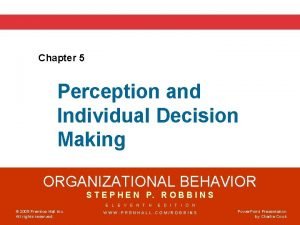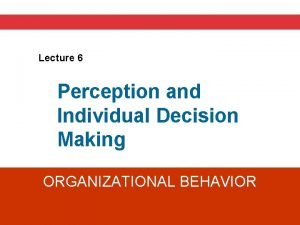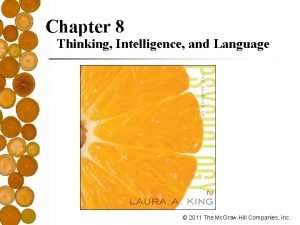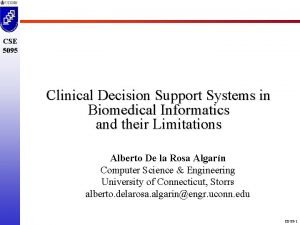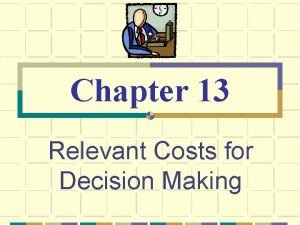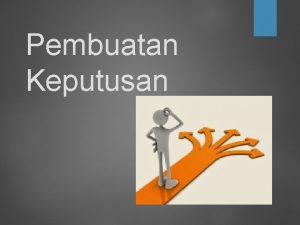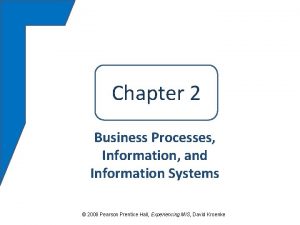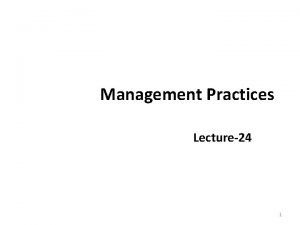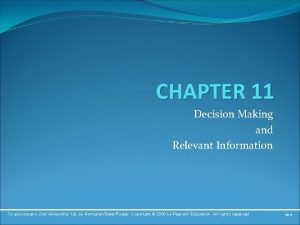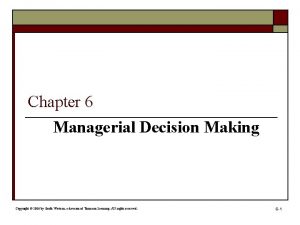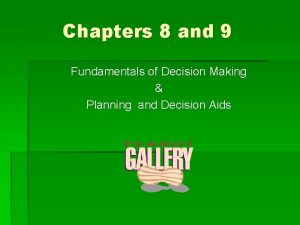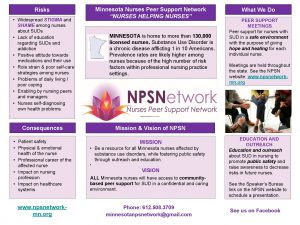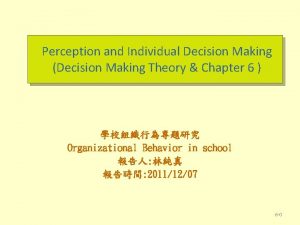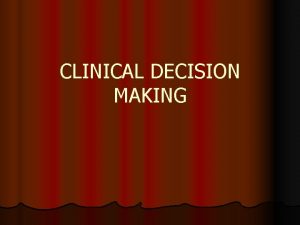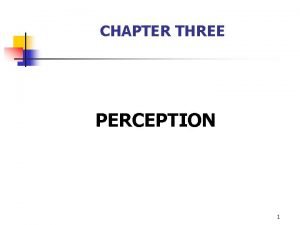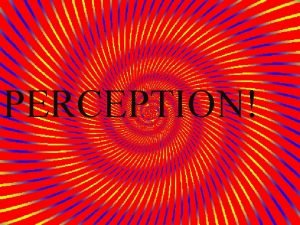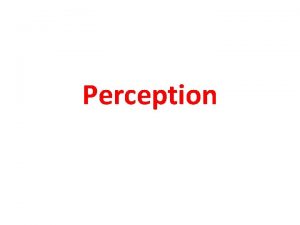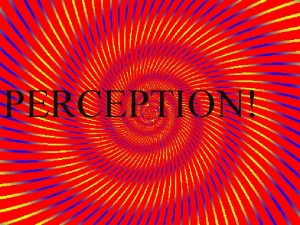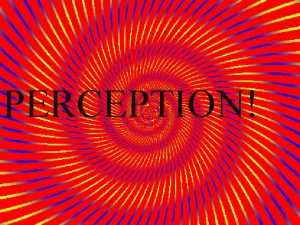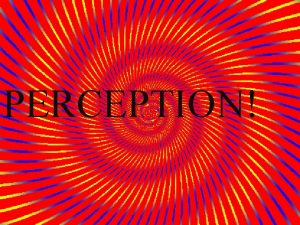PERCEPTION OF CLINICAL DECISION MAKING AMONG STAFF NURSES























- Slides: 23

PERCEPTION OF CLINICAL DECISION MAKING AMONG STAFF NURSES IN A TERTIARY CARE SETTING, UDUPI, KARNATAKA Presenter Mr Nageshwar V Ph D Scholar Nurse Faculty of Nursing 04 June 2021 Manipal College of Pharmaceutical Sciences Manipal of Nursing

1. BACKGROUND OF THE STUDY Ø Clinical decision making is an integral component in nursing practice. (Aspinall, 1979). Ø Nursing decision making has been studied by variety of methods and from different theoretical perspective too. (Benner, 1984) Ø Given the increased complexities of healthcare, clinical decision-making skills are critical to safe client care (Campbell, Aspinall, M. 2004) J. (1979). Use of a decision tree to improve accuracy of diagnosis. Nursing Research, 28, 182 -185. Benner, P. (1984). From novice to expert: Power and excellence in nursing practice Menlo Park: Addison-Wesley. Campbell, E. (2004). Meeting practical challenges via clinical decision amking course. Nurse Educator, 17(1), 195 -198. IMAGE: http: //www. nature. com/ki/journal/v 63/n 5/full/4493640 a. html 6/4/2021 NAGESHWAR, CDM AMONG NURSES MANIPAL 2 U NIVE R SIT Y

BACKGROUND OF THE STUDY (Contd. . ) Ø Recent advancement and research on clinical decision making have focussed on analytical and intuitive process (Abu. Saad & Hamers, 1997; Benner, Tanner, & Chesla, 1996) Ø But prevalent literature is inconclusive of evidence towards one direction Abu-Saad, H. H. , & Hamers, J. P. H. (1997). Decisionmaking and pediatric pain: A review. Journal of Advanced Nursing, 26, 949 -952. Benner, P. , Tanner, C. , & Chesla, C. (1996). Expertise in nursing practice: Caring, ethics and clinical judgement. New York: Springer. IMAGE: http: //blog. theravid. com/wp-content/uploads/2013/08/23103 -3 f 32 e 7 b 42222. jpg 6/4/2021 NAGESHWAR, CDM AMONG NURSES MANIPAL 3 U NIVE R SIT Y

NEED FOR THE STUDY ØWith advancement in technology and modernization impacting health care service the requirements for efficient health care is increased. ØClinical decision making in the health care team has become a necessity. ØHence, analysing the type of models that nurses use while taking clinical decisions may be helpful for us in education and research. E: http: //1. bp. blogspot. com/-Cb 27 lg. UTPw. Y/T 1 Dk 3 mhsdz. I/AAAAA 1 Q/30 vp 7 SG-ox. U/s 1600/whereispatient. jpg 6/4/2021 NAGESHWAR, CDM AMONG NURSES MANIPAL 4 U NIVE R SIT Y

OBJECTIVES OF THE STUDY The objectives of the study were to 1. Assess the perception of nurses regarding Clinical Decision Making(CDM) ability as expressed by them 2. Find out the association between perception of CDM ability and selected demographic variables. 6/4/2021 NAGESHWAR, CDM AMONG NURSES MANIPAL 5 U NIVE R SIT Y

2. METHODOLOGY Design Cross Sectional survey Population 94 Staff nurses working with post-operative patients Setting Tertiary Care Setting, Udupi Inclusion criteria Nurses who are working in surgical units (postoperative wards), nurses who are taking care of postoperative patient with pain up to 72 hours once they are shifted from post-operative recovery unit, nurses who are willing to participate Exclusion Criteria Nurses who are not available during the period of study. nurses who are working in Post-operative ICU’s, nurses’ who underwent post-operative pain management course. 6/4/2021 NAGESHWAR, CDM AMONG NURSES MANIPAL 6 U NIVE R SIT Y

DATA COLLECTION Ethical Considerations: Study was approved from Institutional ethics committee. Subject information sheet was provided and Informed consent was obtained from the study participants. Data collection procedure : Participants were given questionnaire and asked to return it back. They took time in between 15 -25 minutes Data was collected using Tool 1: Demographic proforma, Tool 2: CDM Instrument. World Medical Association. (2001). World Medical Association Declaration of Helsinki. Ethical principles for medical research involving human subjects. Bulletin of the World Health Organization, 79(4), 373. 6/4/2021 NAGESHWAR, FACDM AMONG NURSES MANIPAL 7 U NIVE R SIT Y

TOOL DESCRIPTION Tool Demographic proforma, CDM Instrument. (Lauri & Salanterä 2002) Description Age, gender, qualification, experience, any additional program undergone in CDM, need for such education interventions. CDM Instrument is standardised tool which consists of 24 items. Participants were asked to record one option out of five available in questionnaire describing CDM ability (24 -120 is the range of score) The scores were arbitrarily classified in to analytical decision making (<68), quasirational decision making (68 -78) and intuitive decision making (>78). Tool has established validity and reliability. Content Validation Index - 1 Internal consistency coefficient for the scale is 0. 85; The data collected were analysed using the descriptive and inferential statistics with the help of SPSS 20. 0 version. Lauri, S. , Salanterä, S. , Chalmers, K. , Ekman, S. L. , Kim, H. S. , Käppeli, S. , & Mac. Leod, M. (2001). An Exploratory Study of Clinical Decision‐Making in Five Countries. Journal of nursing scholarship, 33(1), 83 -90. 6/4/2021 NAGESHWAR, CDM AMONG NURSES MANIPAL 8 U NIVE R SIT Y

3. RESULTS 1 Table 1: Distribution of sample according to demographic variables n=94 Mean±SD Min Max Demographic variables 26± 6. 73 21 49 Age (in years) 2 3 4 6/4/2021 Demographic variables Gender Male Female n % 8 86 8. 51 91. 48 Professional qualification DGNM BSc Nursing 65 29 69. 15 30. 85 Experience in post-operative (Surgical) ward Up to 1 yr 1 -6 yrs 70 24 74. 46 25. 54 NAGESHWAR, CDM AMONG NURSES MANIPAL 9 U NIVE R SIT Y

Table I : Distribution of sample according to demographic variables n=94 5 6 7 Demographic variables Any additional educational programme regarding clinical decision making on management of post-operative pain No Yes Any in-service education programme and continuing nursing education regarding clinical decision making on management of post-operative pain No Yes Need for training in Clinical Decision making Yes No 6/4/2021 NAGESHWAR, CDM AMONG NURSES n % 84 10 89. 4 10. 6 76 18 80. 9 19. 1 87 7 92. 5 7. 5 MANIPAL 10 U NIVE R SIT Y

Perception of Clinical Decision Making Table 2 : Table showing area-wise (%) perception of CDM Models of CDM 6/4/2021 Areas Analytical Quasi-rational Intutive Data Collection 46. 88 24. 42 28. 7 Data Processing 40. 11 30. 48 29. 41 Planning Action 28. 87 31. 21 39. 92 Implementation and Evaluation 41. 53 21. 21 37. 25 NAGESHWAR, CDM AMONG NURSES MANIPAL 11 U NIVE R SIT Y

Perception of Clinical Decision Making All participants reported that use of analytical model during CDM. Fig-1 shows area wise use of models for CDM ability. 50 45 46. 88 40. 11 40 41. 53 39. 92 37. 25 35 30 25 28. 70 30. 48 29. 41 31. 21 28. 87 Analytical 24. 42 Quasi-rational 21. 21 Intutive 20 15 10 5 0 Data Collection Data Processing Planning Action Implementation and Evaluation Fig 1 : Graph showing area-wise perception of CDM 6/4/2021 NAGESHWAR, CDM AMONG NURSES MANIPAL 12 U NIVE R SIT Y

Table 3: Association between Perception of CDM and selected demographic variables N=94 Sl no Demographic Characteristics df F Sig 1 Age in Years 22 68 2. 063 0. 012 2 Gender 21 71 1. 246 0. 240 3 Professional qualification 22 71 1. 30 0. 202 4 Experience in post-operative (Surgical) ward 22 68 0. 930 0. 559 22 71 . 509 0. 961 22 69 . 559 0. 936 22 69 1. 20 0. 276 5 6 7 Any additional educational programme regarding clinical decision making on management of post-operative pain Any in-service education programme and continuing nursing education regarding clinical decision making on management of post-operative pain Need for training in Clinical Decision making 6/4/2021 NAGESHWAR, CDM AMONG NURSES MANIPAL 13 U NIVE R SIT Y

Association between CDM and demographic variables Table 4: Association between Perception of CDM – Areawise and selected demographic variables 1. Data Collection (N=94) Sl no Demographic Characteristics 1 Age in Years 2 Gender 3 Professional qualification 4 Experience in post-operative (Surgical) ward 5 6 7 Any additional educational programme regarding clinical decision making on management of post-operative pain Any in-service education programme and continuing nursing education regarding clinical decision making on management of post-operative pain Need for training in Clinical Decision making 6/4/2021 NAGESHWAR, CDM AMONG NURSES df F Sig 0. 62 0. 82 0. 39 0. 96 0. 85 0. 60 0. 57 0. 86 0. 45 0. 94 22 69 1. 18 0. 30 22 69 1. 51 0. 13 22 67 22 71 22 68 22 71 MANIPAL 14 U NIVE R SIT Y

Association between CDM and demographic variables Table 5: Association between Perception of CDM – Areawise and selected demographic variables 2. Data Processing (N=94) Sl no Demographic Characteristics df 22 67 12 81 12 78 12 81 F Sig 1. 85 0. 05 1. 57 0. 11 1. 32 0. 22 1. 44 0. 16 1 Age in Years 2 Gender 3 Professional qualification 4 Experience in post-operative (Surgical) ward 5 Any additional educational programme regarding clinical decision making on management of post-operative pain 12 79 6 Any in-service education programme and continuing nursing education regarding clinical decision making on management of post-operative pain 12 79 0. 97 0. 47 7 Need for training in Clinical Decision making 12 77 1. 58 0. 11 6/4/2021 NAGESHWAR, CDM AMONG NURSES 2. 89 0. 01 MANIPAL 15 U NIVE R SIT Y

Association between CDM and demographic variables Table 6: Association between Perception of CDM – Areawise and selected demographic variables 3. Planning Action (N=94) Sl no Demographic Characteristics 1 Age in Years 2 Gender 3 Professional qualification 4 Experience in post-operative (Surgical) ward 5 6 7 Any additional educational programme regarding clinical decision making on management of post-operative pain Any in-service education programme and continuing nursing education regarding clinical decision making on management of post-operative pain Need for training in Clinical Decision making 6/4/2021 NAGESHWAR, CDM AMONG NURSES df F Sig 1. 01 0. 44 2. 14 0. 026 0. 97 0. 472 0. 31 0. 981 0. 40 0. 951 11 80 0. 79 0. 64 11 80 0. 88 0. 55 11 79 11 82 MANIPAL 16 U NIVE R SIT Y

Association between CDM and demographic variables Table 7: Association between Perception of CDM – Areawise and selected demographic variables 4. Implementation and Evaluation (N=94) Sl no Demographic Characteristics 1 Age in Years 2 Gender 3 Professional qualification 4 Experience in post-operative (Surgical) ward 5 6 7 Any additional educational programme regarding clinical decision making on management of post-operative pain Any in-service education programme and continuing nursing education regarding clinical decision making on management of post-operative pain Need for training in Clinical Decision making 6/4/2021 NAGESHWAR, CDM AMONG NURSES df F Sig 0. 63 0. 818 1. 75 0. 06 0. 75 0. 70 0. 71 0. 73 0. 39 0. 96 13 78 1. 07 0. 39 13 78 1. 88 0. 04 13 76 13 80 12 78 13 80 MANIPAL 17 U NIVE R SIT Y

4. DISCUSSION Current study results All participants reported that use of analytical model during CDM Comparitive Results Bjork IT and Hamilton GA (2011), Dowding’s et al (2009), Hammond’s (1996) reported that most nurses use quasi-rational models during CDM. Bjørk, I. T. , & Hamilton, G. A. (2011). Clinical decision making of nurses working in hospital settings. Nursing research and practice, 2011. Dowding, D. , Spilsbury, K. , Thompson, C. , Brownlow, R. , & Pattenden, J. (2009). The decision making of heart failure specialist nurses in clinical practice. Journal of clinical nursing, 18(9), 1313 -1324. Hammond, K. R. (1996 a). Human judgement and social policy. Irreducible uncertainty, inevitable error, unavoidable injustice. New York: Oxford University Press. 6/4/2021 NAGESHWAR, CDM AMONG NURSES Manipal College of Nursing MANIPAL 18 U NIVE R SIT Y

DISCUSSION (Contd) Current study results Age is the factor found to be associated. All other factors remain no significant association Comparitive Results Lauri S et al (1998, 1998 a) reports that experience does not significantly influence CDM and Benner and colleagues research (1984, 1992, and 1996), Hoffmann K et al (2004) showed that association between education and CDM is inconclusive. Lauri S et al (2001) presented that nurses’ reported use of interpretive CDM models with increasing experience and professional education in their unit which is opposing the current findings. Bjork IT and Hamilton GA reported that increased use of intuitive-interpretive models of CDM was associated with years in present job, further education, male gender, higher age, and working in predominantly surgical units. Lauri, S. , Salanterä, S. , Callister, L. C. , Harrisson, S. , Kdppeli, S. , & Mac. Leod, M. (1998). Decision making of nurses practicing in intensive care in Canada, Finland, Northern Ireland, Switzerland, and the United States. Heart & Lung: The Journal of Acute and Critical Care, 27(2), 133 -142. Lauri, S. , & Salantera ¨, S. (1998). Decision-making models in different fields of nursing. Research in Nursing&Health, 21, 443 -452. Benner, P. , Tanner, C. , & Chesla, C. (1992). From beginner to expert: Gaining a differentiated clinical world in 6/4/2021 19 critical care NAGESHWAR, nursing. Advances in AMONG Nursing Science, CDM NURSES 14(3), 13 -28. Manipal College of Nursing MANIPAL U NIVE R SIT Y

CONCLUSION Ø All the participants perceived that they are using analytical model for Clinical decision making. But area-wise components of decision making showed the use of intuitive and quasirational model also. Ø Observation of practical skills and critical thinking skills need to be evaluated to conclude CDM ability. Ø Extensive evaluation of such studies by controlling confounding factors can be undertaken to conceptualize CDM. 6/4/2021 NAGESHWAR, CDM AMONG NURSES Manipal College of Nursing MANIPAL 20 U NIVE R SIT Y

AKNOWLEDGEMENTS I Sincerely acknowledge 1. Dr. Judith A Noronha, Associate Dean and Professor, Dept of OBG Nursing, Manipal College of Nursing, Manipal. (Guide) 2. Dr Anitha N, Professor and Ho. D, Anaesthesiology, Kasturba Medical College, Manipal. (Co -guide) 3. Dr Anice George, Dean, Manipal College of Nursing, Manipal, Director of Nursing Education, Manipal University 4. Dr Baby S Nayak, Ph D Co-ordinator, Manipal College of Nursing, Manipal 5. Dr (Col) M Dayananda, Medical Superintendent, Kasturba Hospital , Manipal. 6. Mrs Yashodha, Nursing Superintendent, Kasturba Hospital and 7. All the participants in this study for their tremendous support 6/4/2021 NAGESHWAR, FACDM AMONG NURSES Manipal College of Nursing MANIPAL 21 U NIVE R SIT Y

WHAT WE WILL LEARN NOW 6/4/2021 Published nursing research has adopted…… Understanding DM through the CCT Evidence of its use in explaining nursing practice Analysis of CCT NAGESHWAR, CDM AMONG NURSES Manipal College of Nursing MANIPAL 22 U NIVE R SIT Y

6/4/2021 NAGESHWAR, CDM AMONG NURSES Manipal College of Nursing MANIPAL 23 U NIVE R SIT Y
 Perception and decision making in organizational behavior
Perception and decision making in organizational behavior Perception and individual decision making
Perception and individual decision making Objectives of decision making
Objectives of decision making Financial decision
Financial decision Evaluating alternatives and making choices among them
Evaluating alternatives and making choices among them Evaluating alternatives and making choices among them
Evaluating alternatives and making choices among them Ap psych chapter 8
Ap psych chapter 8 Isabel clinical decision support
Isabel clinical decision support Iliad clinical decision support system
Iliad clinical decision support system Decision tree and decision table
Decision tree and decision table Labor capital and land
Labor capital and land Relevant cost for decision making solution chapter 13
Relevant cost for decision making solution chapter 13 Habitual decision making adalah
Habitual decision making adalah Agonizer decision maker
Agonizer decision maker Unstructured decision making
Unstructured decision making Stop method of moral decision making
Stop method of moral decision making Decision making using excel
Decision making using excel Approaches to decision making
Approaches to decision making Building blocks of quality
Building blocks of quality Chapter 11 decision making and relevant information
Chapter 11 decision making and relevant information Classical administrative and political decision making
Classical administrative and political decision making Decision making process definition
Decision making process definition Poster making meaning
Poster making meaning Fundamentals of decision making
Fundamentals of decision making
